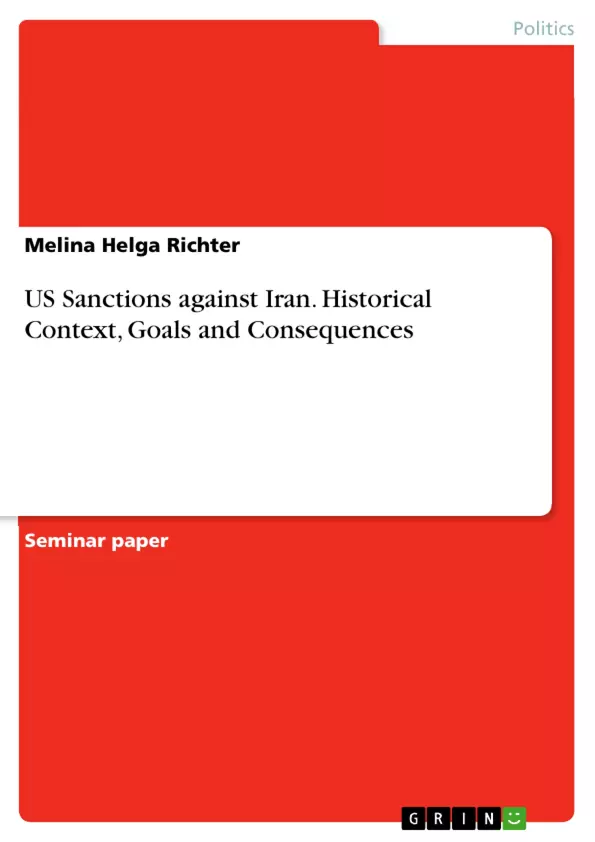This essay aims to specify the theoretical basis of sanctions on Iran, afterwards focusing on the US Sanctions specifically. The history of the US-Iranian relationship is going to be described. Another goal is to outline the consequences that these sanctions have on the USA and Iran, but also on international trade up to now.
This paper is divided into three sections. The first part explains the theoretical basis of sanctions including its definition, the different forms and reasons for sanctions as well as the legal requirements. In the main part, the US sanctions, its historical context as well as the goals and consequences of the US sanctions against Iran are presented. In the last part, a conclusion is drawn.
Inhaltsverzeichnis (Table of Contents)
- Introduction
- Theoretical basis
- Definition of a Sanction and Legal Agreements
- Goals of sanctions
- Forms of sanctions
- US Sanctions against Iran
- Historical context
- Goals and implementation
- Consequences
- On Iran
- On international trade
- Conclusion and Outlook
Zielsetzung und Themenschwerpunkte (Objectives and Key Themes)
This essay aims to examine the theoretical basis of sanctions, specifically focusing on the US sanctions against Iran. It explores the historical context of the US-Iranian relationship and analyzes the consequences of these sanctions on both countries and international trade.
- Theoretical framework of sanctions
- Historical context of US-Iranian relations
- US sanctions against Iran
- Economic impact of sanctions on Iran and the USA
- Influence of sanctions on international trade
Zusammenfassung der Kapitel (Chapter Summaries)
The first part of the essay defines sanctions, explores the legal agreements surrounding them, and discusses the various goals and forms of sanctions. It provides a comprehensive overview of the theoretical basis of sanctions.
The second section delves into the US sanctions against Iran. It examines the historical context of the US-Iranian relationship, outlining the progression of tensions and the role of sanctions in this dynamic. This section then explores the goals and implementation of the US sanctions, followed by an analysis of their consequences on both Iran and international trade.
Schlüsselwörter (Keywords)
The primary keywords and focus topics of this text are sanctions, international trade, US-Iranian relations, economic embargo, international economic policy, and globalized world.
- Quote paper
- Melina Helga Richter (Author), 2020, US Sanctions against Iran. Historical Context, Goals and Consequences, Munich, GRIN Verlag, https://www.grin.com/document/960112



